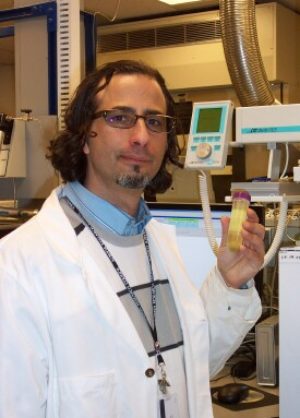Innovation Anthology #130: Director, Applications Centre

The solution to our energy and climate change crises could be as near as the local slough.
That’s the hope of InnoVentures Canada, a consortium of research councils across the country.
Their scientists want to harness the photosynthetic activity of algae, the green scum that forms on prairie lakes and ponds during the summer.
Produced on a large scale, algae factories could capture excess carbon dioxide from the atmosphere. As well, the fatty acids in algae are an excellent feedstock for the production of bio-diesel.
Dr. John Vidmar of the Alberta Research Council, a member of Innoventures Canada, describes how an algae factory might be constructed.
DR. JOHN VIDMAR: We’re actually looking a hybrid. Covered ponds in which we have total control of evaporation and temperature. Also the depths of the pond. The first two inches are the only place where you actually have your algae within it. Underneath that there’s no algae being grown because light isn’t getting there. So we’re looking at solar collectors and actually trying to increase the depth of the pond where we have active growth of the algae.
Dr. Vidmar suggests the heated ponds around coal fired plants could make good algae factories to beat the Canadian winter.
Thanks today to InnoVentures Canada. FOR INNOVATION ANTHOLOGY, I’M CHERYL CROUCHER
Guest
Dan Farr, PhD,
Alberta Biodiversity Monitoring Institute, Edmonton, Alberta, Canada,
Sponsor
Alberta Research Council
Established as the first provincial research organization in Canada, the Alberta Research Council is 85 years old. The Alberta Research Council (ARC) develops and commercializes technologies to give customers a competitive advantage. A leader in innovation, ARC provides solutions globally to the energy, life sciences, agriculture, environment, forestry and manufacturing sectors.
ARC performs about five per cent of the roughly $1.5 billion in R&D done in Alberta each year, and generates revenues of approximately $84 million per year. ARC operates from five sites across the province in Edmonton, Calgary, Vegreville and Devon and employs more than 600 highly-skilled people.
In January 2010, under the new Alberta Innovation Framework, the Alberta Research Council was restructured and incorporated into the new provincial agency Alberta Innovates Technology Futures.

Program Date: 2008-05-01